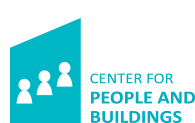Calculating NWoW office space with the PACT model
Mei 2015 | Evi de Bruyne, Marion Beijer
.jpg)
Paper published in the Journal of Corporate Real Estate, Vol. 17 Iss 2 pp. 122-133. Due to copyright unfortunately it's not possible to give access to the full article.
Purpose
The purpose of this paper is to illustrate the working of the PACT calculation model, a tool to determine office space dimensions. New ways of working (NWoW) seem to have become a fixed value in facility management (FM) practice in The Netherlands today. Stimulated by new technological possibilities, companies are rethinking their office environments to make workplaces more flexible and their use “activity related”. However, this requires a different approach to quantify the needed space and determine the types of workplaces to fit organizations’ processes. The PLaces and ACTivities (PACT) calculation model allows (facility) managers to gain an insight in the number and type of spaces needed, modulated by different scenarios and fitting to the organization and its work processes.
Design/methodology/approach
This paper mainly aims to present the PACT model: an office space calculation tool. A case study is presented and calculated to compare an actual work environment of an organization to the PACT calculated results. As input for the model, data were used that were available before the work environment changes in 2007. Additionally, one scenario of a different workplace use is calculated which helped to visualize the accuracy and validity of the model.
Findings
When comparing the post hoc PACT calculated space to the real-life work environment, the number of calculated workplaces and the ratio to the number of employees do not seem to differ strongly. However, substantially less meeting space is calculated by the model, and some elements might require more testing to verify it completely. The scenario calculation shows that the model output changes to adapt to a more flexible work process.
Originality/value
Even though calculation and simulation models for office space are available, the described model puts together many different elements to provide a more holistic calculation. Elements like, for instance, absence, activities and occupational choices are combined.
Conclusion
Working “anytime and anywhere” requires a different approach to quantify space needed to fit the organizations process. The PACT model can help to discover the consequences of office layout choices, related to activity patterns, differentiation of workplace use, workplace types and occupation in offices. Additional elements like the dimensions of the current building, expected future developments and time constraints can help to discover which workplace environment fits the organization best, now and in the future.
The PACT model is a useful tool for organizations during the decision-making process. How drastic will the choice of implementing NWoW principles be for the organization? Will the cost reduction outweigh the unavoidable changes in the processes and use of the workplace? By transparently calculating different scenarios, the implications of different layout choices are made visible. And by changing elements in the calculation, an organization can explore what different scenarios would mean for the office space needed. Differentials can be taken into account, for instance, if the employees start working one day from home, a shift in the work process, or growth of the organization, can be taken into account.
